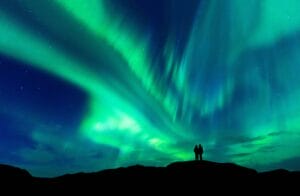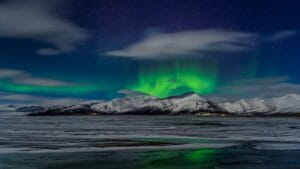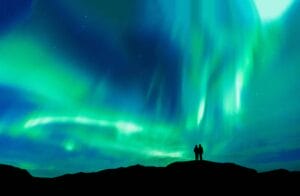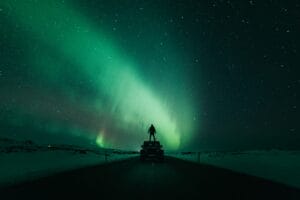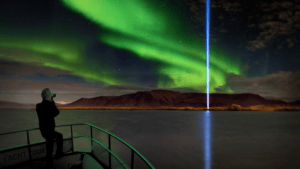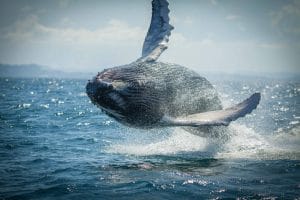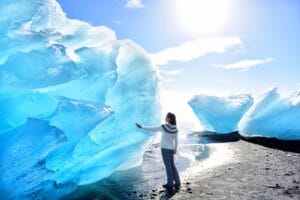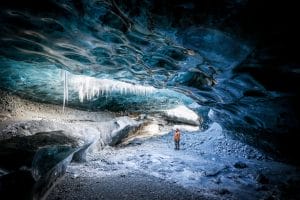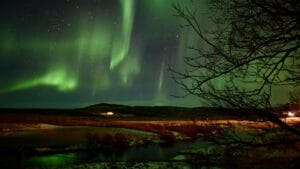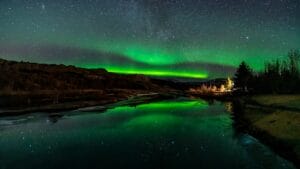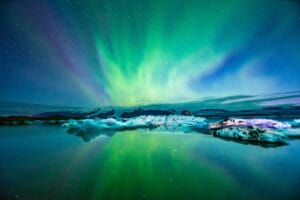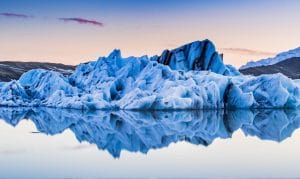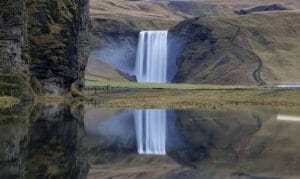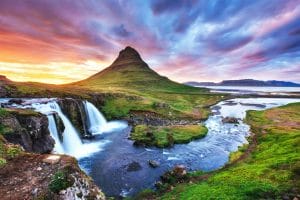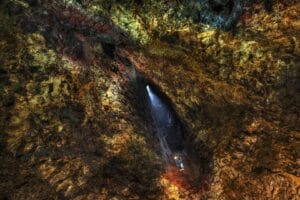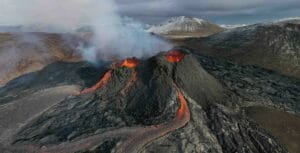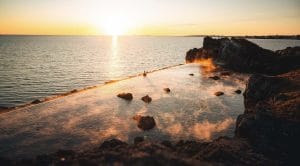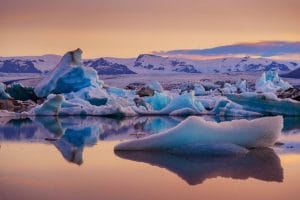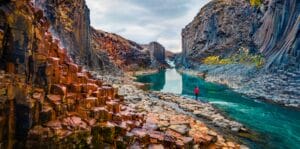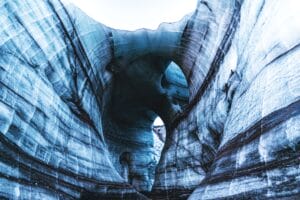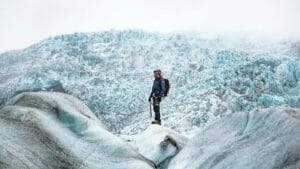Iceland is one of the world’s premier destinations for experiencing and photographing the Northern Lights, or Aurora Borealis. With its dark skies, minimal light pollution, and stunning natural landscapes, the country offers incredible opportunities to capture this natural phenomenon in all its glory. This guide provides everything you need to know about Northern Lights photography in Iceland, from finding the best locations and choosing the right gear to mastering camera settings and editing techniques.

What Are the Northern Lights?
The Northern Lights are natural light displays caused by the interaction between solar particles and Earth’s magnetic field, producing vibrant colors such as green, pink, and purple in the night sky. This celestial event is most visible near the Arctic Circle, making Iceland an ideal location for witnessing the phenomenon.
Why Iceland Is Perfect for Northern Lights Photography
- High Latitude: Iceland’s location near the Arctic Circle makes it one of the best places to see the Northern Lights, especially from September to April when the nights are long.
- Minimal Light Pollution: Iceland’s low population density means there are vast areas with little to no light pollution, creating optimal conditions for night photography.
- Stunning Natural Landscapes: With backdrops like glaciers, volcanoes, waterfalls, and black sand beaches, Iceland’s landscapes can add dramatic context to your Northern Lights photos.

Best Time to Photograph the Northern Lights in Iceland
The Northern Lights season in Iceland generally runs from late September to mid-April, when the nights are dark enough for optimal viewing. Here’s what to consider:
- Dark Nights: The darker the night, the better your chances of seeing the Northern Lights. Avoid the full moon period as its brightness can reduce the visibility of the auroras.
- Clear Skies: Cloud cover can obscure the Northern Lights, so check the weather forecast and aurora forecasts for optimal conditions. The Icelandic Met Office provides aurora activity predictions, as well as cloud cover forecasts.
- Solar Activity: Higher solar activity increases the chances of stronger auroras. Websites like SpaceWeatherLive.com provide information on solar wind and Kp index predictions, which indicate the intensity of the Northern Lights on a scale from 0 to 9.
Best Locations for Northern Lights Photography in Iceland
Here are some of the top spots to capture the Northern Lights:
Þingvellir National Park
- Located along the Golden Circle, Þingvellir offers open views and a historic landscape that adds depth to Northern Lights photos. The park’s lakes and cliffs provide excellent reflections and framing.
Jökulsárlón Glacier Lagoon
- The shimmering icebergs and still waters of Jökulsárlón make for magical compositions. Photograph the aurora reflecting off the lagoon’s surface, or head to the nearby Diamond Beach, where the lights dance over ice fragments on the black sand.
Kirkjufell Mountain
- Situated on the Snæfellsnes Peninsula, Kirkjufell is one of Iceland’s most photographed mountains. Its distinct shape, coupled with the Northern Lights above, creates iconic imagery. The nearby waterfalls can be used to enhance the foreground.
Vík and Reynisfjara Black Sand Beach
- For a coastal setting, the black sand beaches of Vík and Reynisfjara provide a dramatic backdrop for the aurora. The basalt sea stacks known as Reynisdrangar add visual interest.
Hvítserkur Rock Formation
- This unique rock formation on the Vatnsnes Peninsula resembles a dragon drinking from the sea. The Northern Lights can create a mystical scene when photographed behind Hvítserkur.
Goðafoss Waterfall
- Known as the “Waterfall of the Gods,” Goðafoss is an incredible place to photograph the Northern Lights, with its cascading waters in the foreground.
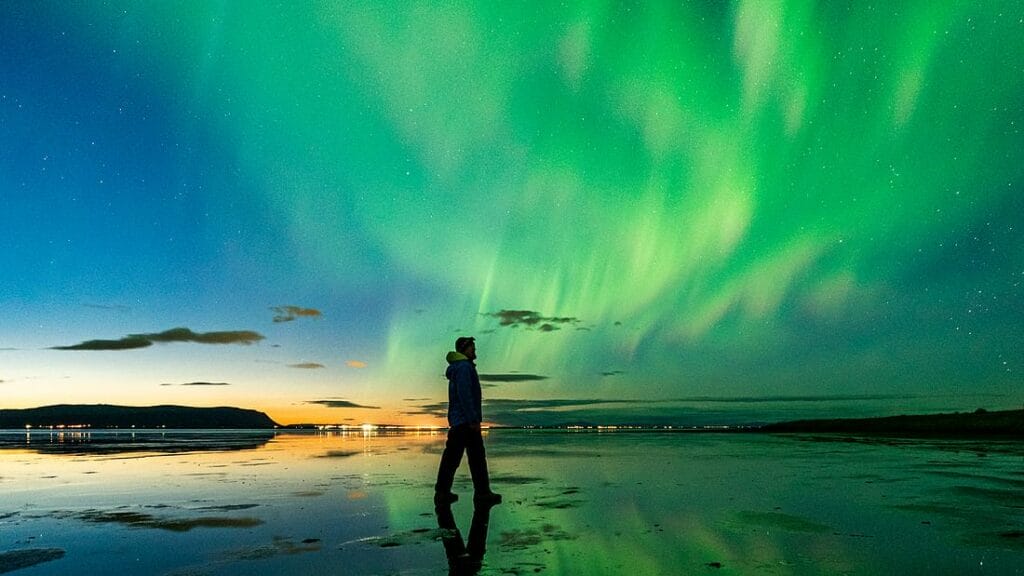
Essential Gear for Northern Lights Photography
To capture the Northern Lights effectively, use the following gear:
- Camera with Manual Settings: A camera that allows full manual control of settings is essential. DSLRs and mirrorless cameras with good low-light performance are ideal.
- Wide-Angle Lens: A fast wide-angle lens (f/2.8 or faster) helps capture the vastness of the sky. A focal length between 14mm and 24mm is recommended for full-frame cameras, and 10mm to 18mm for crop-sensor cameras.
- Tripod: A sturdy tripod is crucial for keeping your camera steady during long exposures.
- Remote Shutter Release or Intervalometer: Helps avoid camera shake when taking long exposures.
- Extra Batteries: Cold temperatures can drain batteries quickly, so bring extras.
- Headlamp with Red Light: A headlamp is useful for navigating in the dark, and the red light mode preserves your night vision.
Camera Settings for Northern Lights Photography
Achieving the right camera settings is key to capturing the aurora’s vivid colors. Here’s a basic guideline:
- Manual Mode: Shoot in manual mode to have full control over your settings.
- ISO: Start with an ISO of 1600 to 3200. Adjust depending on the brightness of the aurora and your camera’s performance in low light.
- Aperture: Use a wide-open aperture, such as f/2.8 or wider, to let in as much light as possible.
- Shutter Speed: Begin with a shutter speed of 5-15 seconds. If the aurora is moving rapidly, use a shorter exposure (5-8 seconds) to avoid motion blur. For faint auroras, longer exposures (15-20 seconds) can help capture more detail.
- Focus: Manually set your lens to infinity focus, then fine-tune by focusing on a bright star or distant light source.
- White Balance: Use a Kelvin setting of 3200K to 4000K for a natural look, or shoot in RAW and adjust in post-processing.
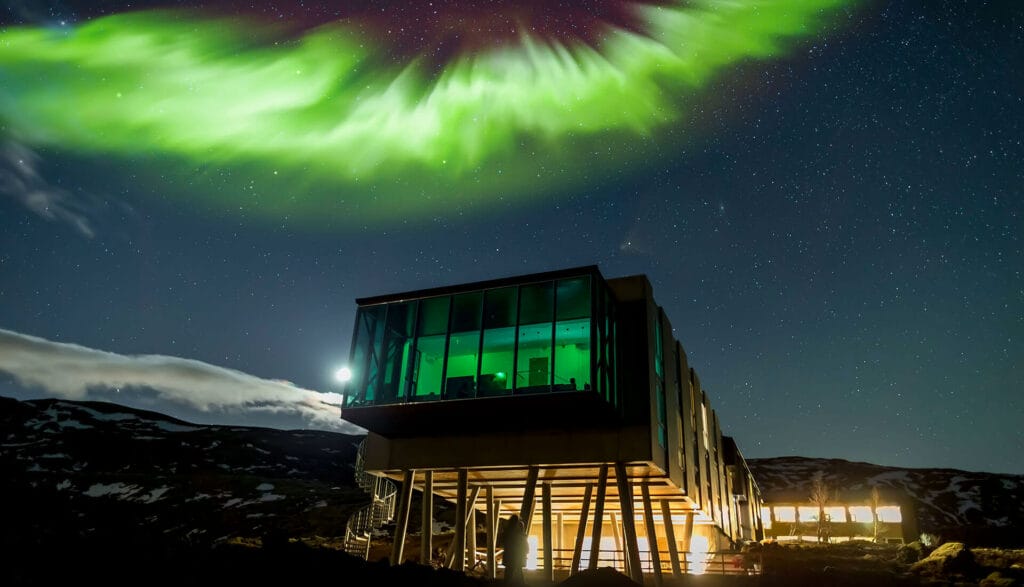
How to Capture the Northern Lights on iPhone
Capturing the Northern Lights with an iPhone is possible with the right techniques and settings. While smartphone cameras may not offer the same manual control as professional cameras, recent iPhone models come equipped with advanced features that can help you photograph the aurora. Here’s a step-by-step guide to getting the best Northern Lights photos on your iPhone.
1. Use Night Mode for Better Low-Light Performance
- iPhone models from the iPhone 11 onward come with Night Mode, which automatically activates in low-light conditions. This mode allows for longer exposure times to capture more light.
- To enable Night Mode, open the Camera app and look for the moon icon at the top left. The icon will appear yellow when Night Mode is active. You can adjust the exposure time by tapping the icon and moving the slider from 1 to 30 seconds.
- Longer exposures (10-30 seconds) are better for capturing more detail in the aurora. However, longer exposure times may also cause the lights to blur if they move rapidly.
2. Use a Tripod or Stabilize Your iPhone
- Stabilize your iPhone to avoid camera shake during long exposures. Use a tripod or set your phone on a stable surface.
- If you don’t have a tripod, you can try using a car roof, fence, or rock to keep your iPhone steady. Camera shake can blur the Northern Lights, especially during long exposures.
3. Adjust the Camera Settings Using a Third-Party App
- For more control over settings like ISO, shutter speed, and focus, consider downloading a third-party app such as ProCamera, NightCap, or Camera+.
- These apps allow you to manually set the shutter speed (ideally between 5 and 15 seconds) and ISO (start with 800 to 1600) to better capture the Northern Lights.
- Set the focus manually to infinity to ensure the stars and aurora are sharp. Some apps allow you to lock the focus by tapping on the screen and adjusting the focus slider.
4. Turn Off Flash and Live Photos
- Flash will not help in capturing the Northern Lights and can create unwanted reflections, so make sure it is turned off.
- Live Photos is not necessary for this type of photography and can reduce image quality in low-light conditions. Turn it off by tapping the Live Photos icon (circle icon) in the Camera app.
5. Edit Your Northern Lights Photos
- Shooting in RAW (available in ProCamera and similar apps) will allow for more flexibility in post-processing. You can adjust exposure, contrast, and noise reduction for a cleaner image.
- Use editing apps like Adobe Lightroom Mobile, Snapseed, or the iPhone’s built-in photo editor to enhance the colors, reduce noise, and increase clarity.
Recommended Apps for iPhone Northern Lights Photography
- NightCap Camera: Great for astrophotography, with manual settings for shutter speed and ISO.
- ProCamera: Offers RAW shooting, manual controls, and a user-friendly interface.
- Slow Shutter Cam: Ideal for capturing long exposures, with options for setting exposure time and motion blur.

How to Capture the Northern Lights on a Samsung Phone
Samsung phones, especially those from the Galaxy S series and Note series, are known for their excellent low-light performance, making them suitable for photographing the Northern Lights. Follow these steps to capture stunning Northern Lights photos with a Samsung device.
1. Use the Pro Mode for Manual Control
- Samsung’s Pro Mode allows for manual adjustment of camera settings, which is essential for capturing the Northern Lights.
- Open the Camera app and select Pro Mode. This will give you control over settings such as ISO, shutter speed, and focus.
2. Adjust Key Settings in Pro Mode
- ISO: Set the ISO to 800-1600 to allow enough light while minimizing noise. You may need to adjust the ISO based on the brightness of the aurora and your phone’s low-light performance.
- Shutter Speed: Start with a shutter speed of 5-15 seconds. If the Northern Lights are moving quickly, use a shorter exposure time. For slower-moving lights, you can increase the shutter speed up to 20-30 seconds.
- Focus: Manually set the focus to infinity for sharper images of the sky and stars. In Pro Mode, you can adjust the focus by tapping on the screen and moving the focus slider.
- White Balance: Set the white balance to a value between 3500K and 4000K for natural-looking colors. You can also leave it on auto if you’re unsure.
3. Stabilize Your Samsung Phone
- Use a tripod to keep your phone steady during long exposures. Even slight movement can blur your photos, so this is crucial for clear images.
- If you don’t have a tripod, improvise by setting your phone on a solid surface, such as a bench, car roof, or rock.
4. Disable Flash and Other Automatic Settings
- Turn off the flash, as it won’t be useful for aurora photography.
- Disable auto HDR to avoid unexpected exposure adjustments.
- Make sure that Scene Optimizer is turned off, as it can interfere with Pro Mode settings.
5. Post-Processing for the Best Results
- Shooting in RAW (available in Pro Mode on most Samsung models) gives you more flexibility for editing later.
- Use apps like Adobe Lightroom Mobile, Snapseed, or Samsung’s built-in editor to adjust brightness, contrast, and sharpness. Noise reduction is also essential for improving image quality in low-light conditions.
Techniques for Better Northern Lights Photos
- Adobe Lightroom Mobile: For RAW editing, noise reduction, and color adjustments.
- Open Camera: A free app that offers manual settings similar to Pro Mode, with additional customization options.
- Camera FV-5: This app provides advanced manual controls, including exposure settings and focus adjustments.

Techniques for Better Northern Lights Photos
- Use Foreground Elements: Incorporate foreground features like mountains, lakes, or ice formations to add depth and context to your shots.
- Take Multiple Shots: Experiment with different settings and compositions. Capture both vertical and horizontal orientations.
- Bracketing Exposures: Take multiple shots with different exposures to create HDR images, combining them in post-processing for better detail.
- Time-Lapse Photography: Capture the Northern Lights over time by taking a series of photos with consistent intervals (e.g., one shot every 5-10 seconds) and compile them into a time-lapse video.
Post-Processing Tips for Northern Lights Photography
Editing Northern Lights photos can bring out the best colors and details. Here are some tips:
- Shoot in RAW: RAW files contain more data, allowing for better adjustments in post-processing.
- Adjust White Balance: Fine-tune the temperature to achieve a natural-looking color for the aurora.
- Enhance Contrast and Clarity: Increase contrast to make the aurora stand out against the night sky. Use the clarity slider in Lightroom or other editing software to add definition.
- Reduce Noise: Apply noise reduction to clean up grain, especially in high ISO images.
- Brighten Shadows and Darken Highlights: Adjust shadow and highlight settings to bring out details in both the foreground and sky.

Common Mistakes to Avoid in Northern Lights Photography
- Using Auto Focus: The camera may struggle to focus in low light. Use manual focus and set it to infinity.
- Shutter Speeds Too Long: Overexposing can blur the aurora’s movement. Aim for 5-15 second exposures.
- High ISO Settings: While high ISOs capture more light, they can introduce noise. Find a balance between ISO and exposure time.
Northern Lights Photography Tours in Iceland
For those who prefer a guided experience, Northern Lights photography tours in Iceland offer expert guidance. These tours are led by experienced photographers who know the best spots and conditions for aurora photography. Tours often include transportation, gear advice, and tips on how to make the most of your camera settings.
Conclusion
Photographing the Northern Lights in Iceland is a dream for many photographers and travelers. With the right preparation, gear, and techniques, you can capture stunning images that showcase the beauty of this natural phenomenon. Whether you’re a beginner or an experienced photographer, Iceland provides the perfect backdrop for an unforgettable aurora photography experience.



